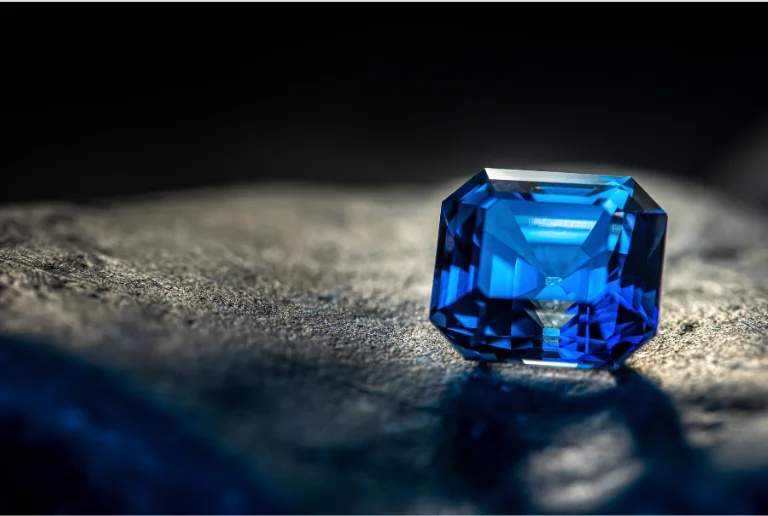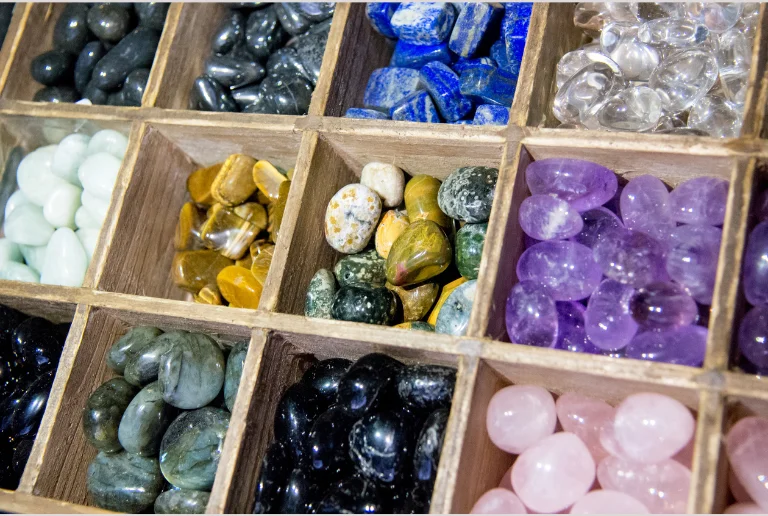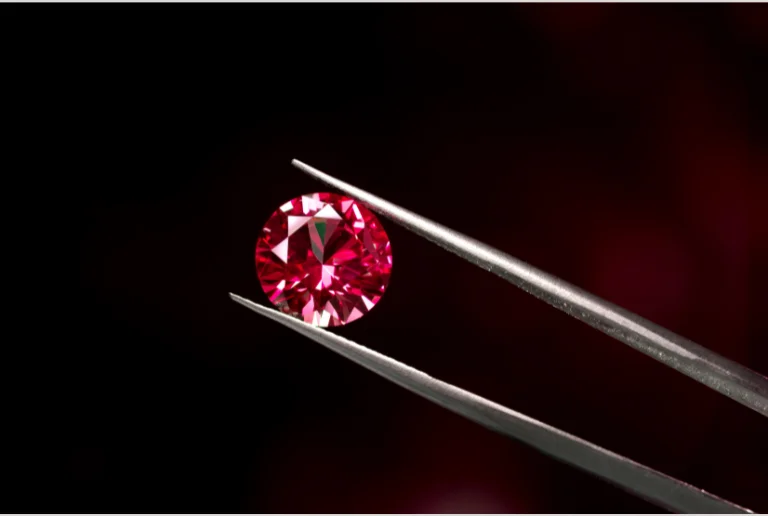Discover the Allure of Gemstones
Explore the captivating world of gemstones with ShineDove. Our extensive guide provides valuable insights into gemstone beauty, grading, and significance. Learn about their history, healing properties, and how they can elevate your jewellery collection and enrich your life.
What is a Gemstone?
A gemstone, often referred to as a jewel or precious stone, is a mineral crystal renowned for its beauty and rarity. Initially, gemstones may seem ordinary in their raw state, but once cut and polished, they reveal their true splendour. These polished gemstones are used in various types of jewellery, including rings, necklaces, and bracelets, enhancing their aesthetic appeal and intrinsic value. Beyond adornments, gemstones have been valued throughout history for their symbolic meanings and metaphysical properties, deeply embedded in cultural and spiritual beliefs.
History and Significance of Gemstones
Gemstones have held a special place in human history, symbolising wealth, power, and status from ancient times to the present. Their appeal extends beyond mere visual beauty to their cultural and historical significance. Each gem carries a story and tradition, making them treasured items in both historical and contemporary contexts.

How Gemstones Are Graded?
Similar to diamonds, gemstones are graded by gemological institutes based on several key factors:
- Colour: This is a crucial characteristic, evaluated on hue, tint, and saturation. For instance, vibrant red and blue hues are typically more valuable.
- Clarity: Refers to the presence of internal or external imperfections. Gems are classified into:
- Type 1: Generally eye-clean.
- Type 2: May show some visible inclusions.
- Type 3: Often included, making high clarity ratings rare.
- Cut: Refers to the gemstone’s shape and faceting:
- Cabochon Cut: Features a smooth, rounded shape.
- Faceted Cut: Enhances brilliance by reflecting light through multiple facets.
- Carat Weight: Measures the gemstone’s size, with one carat equal to 0.2 grams. Precise measurements can affect a gem’s value.

Gemstone Colour
The colour of a gemstone is one of its most defining features. Important aspects to consider are:
- Hue: The actual colour perceived, such as red, blue, or green. White, black, and grey lack hue.
- Tint: A hue mixed with white, resulting in a lighter and less saturated colour.
- Saturation: The intensity of the colour; higher saturation indicates a more vibrant and valuable gem.
Gemstone Clarity
- Type 1: Eye-clean stones with no visible inclusions.
- Type 2: Includes some visible inclusions but fewer than Type 3.
- Type 3: Often included, making high clarity ratings rare.
Gemstone Cut
- Cabochon Cut: An elliptical shape with a smooth, rounded top, ideal for opaque stones.
- Faceted Cut: Maximises the light reflection and brilliance of transparent gemstones.
Types of Gemology Reports
Brief Report
Provides basic information about the stone, including type, colour, clarity, size, and shape. Photos may or may not be included.
Standard Report
Includes detailed information about the stone’s colour, clarity, weight, shape, and type, with a sealing for authenticity. May also note any treatments the stone has undergone.
Full Report
Contains all details from the standard report plus additional information like trade name, finish grade, proportions, specific gravity, and refractive index, along with a photo and gemologist’s signature.
Gemstone Certification Labs
Certification labs are crucial in the jewellery industry for verifying gemstone authenticity and quality. They provide detailed reports and grades that confirm a gemstone's characteristics, such as colour, clarity, cut, and carat weight. Certified gemstones offer buyers assurance of their true value and quality. At ShineDove, we highlight the key certification labs globally recognised for their rigorous standards and expertise, aiding you in making informed decisions:

- Gemological Institute of America (GIA): Known for setting industry standards and widely trusted in the diamond trade.
- American Gem Society (AGS): Renowned for its in-depth scientific approach to diamond grading.
- Hoge Raad voor Diamant (HRD): Known as the Diamond High Council, specialising in diamond grading.
- Swiss Gemological Institute: Focuses on pearls and coloured stones certification.
- International Gemological Institute (IGI): A global leader in grading diamonds, coloured stones, and jewellery certification.
Gemstone Healing Powers
Throughout history, gemstones have been revered for their supposed metaphysical properties and their ability to influence well-being. Many believe that these stones carry unique energies that can enhance various aspects of our lives, from emotional stability to physical health. At ShineDove, we explore the specific healing benefits of each gemstone, contributing to a balanced and fulfilling life:
Aquamarine: Known for fostering courage, luck, and inner peace. This stone is believed to enhance feelings of self-love, calm, and guidance while dispelling nerves.
Amethyst: Traditionally used to combat intoxication and control habits, this stone is also thought to aid those with diabetes and low immunity.
Emerald: Associated with the heart chakra, emeralds are believed to improve memory and intuition, making them a cherished stone for enhancing emotional and spiritual growth.
Garnet: Referred to as the “stone of health,” garnet is thought to promote physical wellness and strength, supporting the absorption of essential minerals and vitamins.
Jade: Known for protecting against negativity, jade is believed to balance luck and health while purifying the blood and alleviating mental fatigue.
Moonstone: Valued for its positive effects on the reproductive system, moonstone is especially beneficial during pregnancy, easing pain during delivery and enhancing feminine energy.
Pearl: Pearls are associated with calmness and honesty, offering versatility and enhancing emotional stability.
Ruby: Regarded as a powerful stone, ruby is believed to boost stamina and vitality across all areas of life.
Quartz: Enhances mental clarity and is used to treat vertigo. Quartz is also thought to strengthen resistance in individuals with low immunity.

